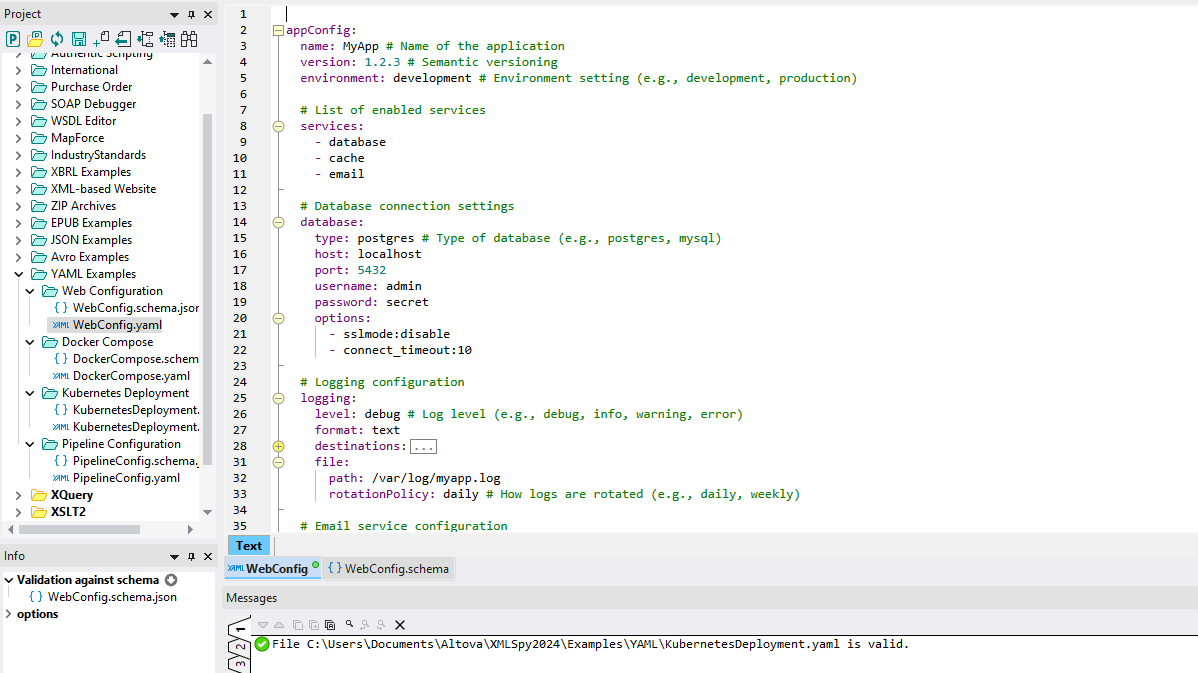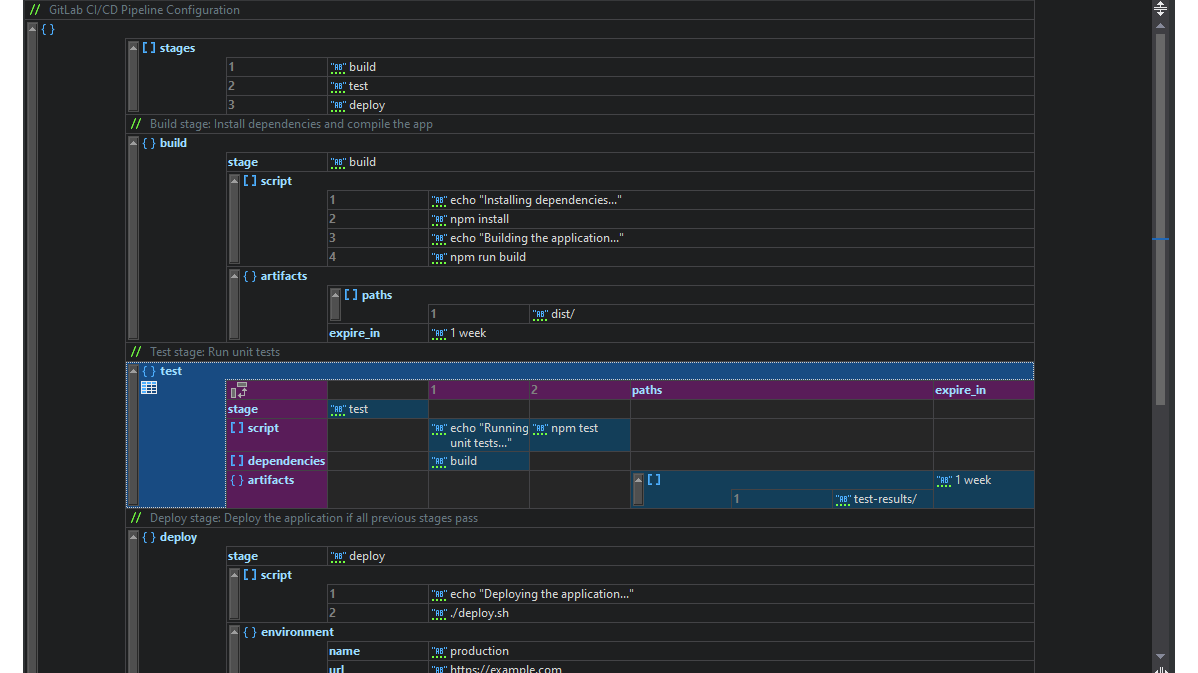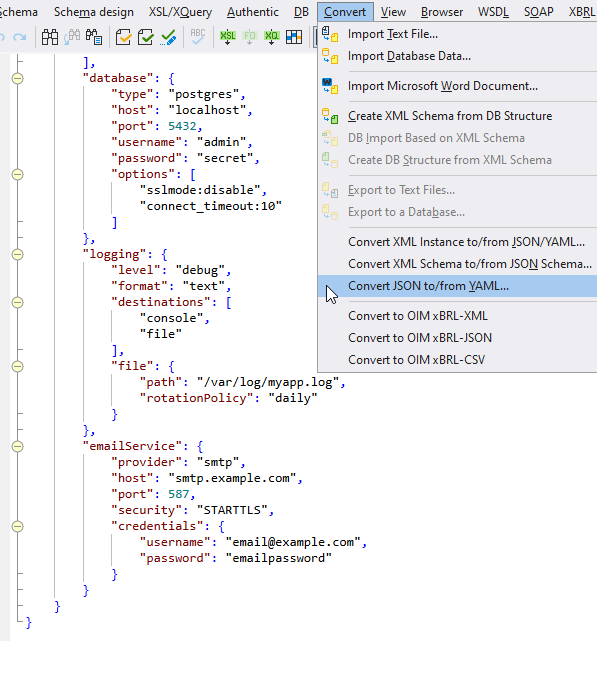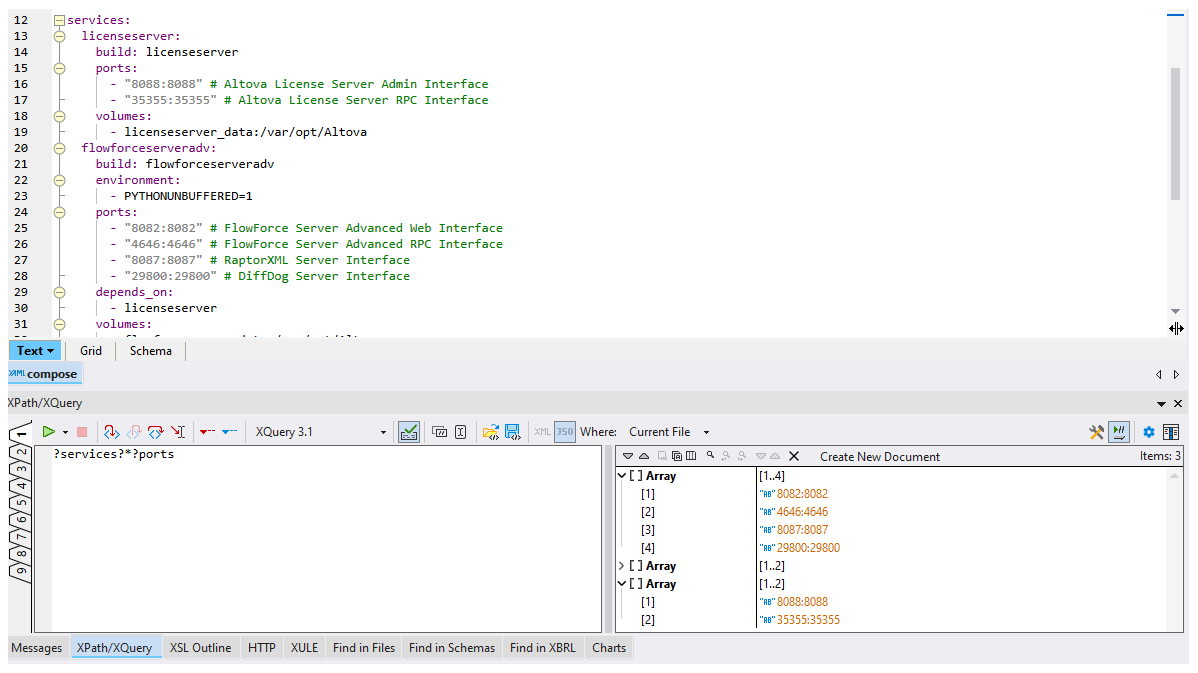
Muchas aplicaciones y sistemas modernos utilizan una combinación de XML, JSON y YAML para los archivos de configuración, el intercambio de datos y las cargas útiles de las API.
Además de la edición de datos YAML, XMLSpy proporciona numerosas características compatibles con XML y JSON. La compatibilidad de todos estos formatos en un solo editor ofrece a los desarrolladores la flexibilidad necesaria para trabajar con archivos de distintas fuentes e integrarlos en sus proyectos sin problemas.
Las herramientas YAML de XMLSpy incluyen:
- Edición de datos YAML con resaltado de sintaxis
- Plegamiento de código y números de línea
- Comprobación de formato correcto
- Validación de documentos YAML
- Generación esquemas a partir de documentos YAML
- Conversor YAML en un clic






